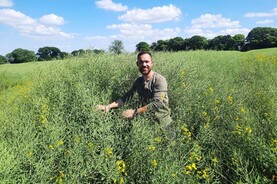Ireland now has the highest density of flux towers in Europe measuring greenhouse gas emissions from all types of soil across the country.
There are 28 carbon flux towers dotted across the country on sites that were chosen so that they can be representative of a range of soil types, farming sectors and farming intensity, James Rambaud of Teagasc told farmers at the Johnstown Castle open day on Tuesday.
While the high density of carbon flux towers will not fast-track Ireland’s measurement of greenhouse gas emissions and sequestration in terms of time, it will give very comprehensive Ireland-specific data which will be fed into the EPA’s national inventory.
Last year, Teagasc research proved that the carbon emissions from drained grassland peat soils had been significantly over-estimated. While 340,000ha of mainly grassland on peat soils was allocated a carbon emissions figure, Teagasc found that some 200,000ha of that figure were, in fact, rewetted and therefore not emitting as much carbon as believed.
“Next year will be our first year of full data from all 28 towers,” Rambaud told the Irish Farmers Journal. “Once we have three years of data, that will be fed into the EPA’s inventory calculations and then it will be revised with new information every year.”
With a 25% reduction in greenhouse gas emissions targeted for the agricultural sector by 2030, all new Ireland-specific data could have a significant effect on future farming policies.
Rambaud remarked that the current research focus on carbon emissions from different farm types “should have been funded 20 years ago”. While a handful of carbon flux tower sites have been in operation and recorded for 25 years, the data did not have the same critical mass as the current network of 28 towers will.
Extra hedgerows
Farmers can take on-farm actions which can increase carbon sequestration, including avoiding soil compaction, improving existing hedgerows and soil fertility, using clover and multispecies swards, restoring wetlands and planting extra hedgerows and trees.
On tillage farms, cover crops and incorporating straw both increase soil carbon sequestration.






 This is a subscriber-only article
This is a subscriber-only article










SHARING OPTIONS: